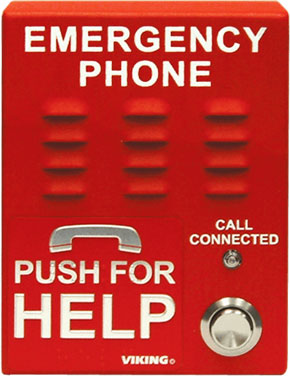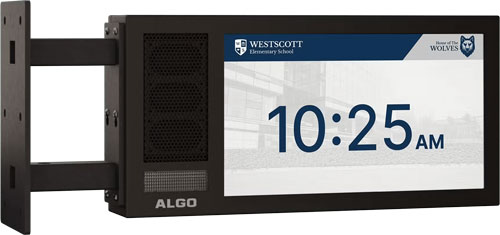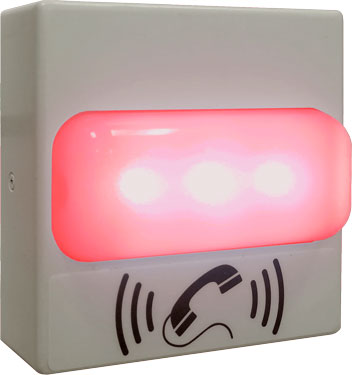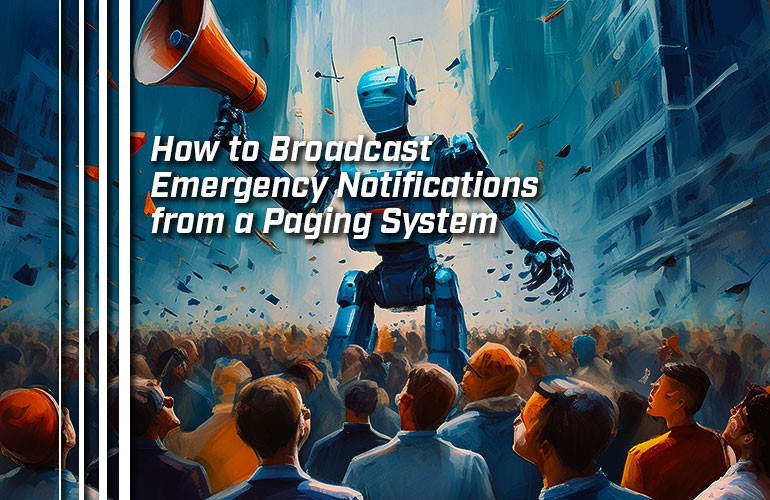A paging system is more than a method to broadcast messages. It can be a critical component of emergency communications at the most important times.
In this blog, we give examples of how to broadcast live and pre-recorded emergency notifications over a paging system. We cover both analog paging systems and IP paging systems.
If you’d like to know more about the differences between analog and IP paging, check out our clear, detailed Paging Systems Buyer’s Guide.
Let’s get into it!

Emergency Notifications via IP Paging Systems
IP paging systems offer a range of options for emergency mass notifications. This information is general: the exact specifics of how emergency notifications work on your paging system may differ. Why? Because of one of the primary advantages of IP paging systems: the system is software-controlled and supported software features, of course, vary from platform to platform.
You play a pre-recorded mass notification for emergencies from a computer or from a configured VoIP phone or paging console with microphone. You can set a quick action key on the VoIP phone that you use for paging to access the emergency extension.
You broadcast live messages from the same devices.
To broadcast pre-recorded emergency notifications over an IP paging system, you upload a custom emergency notification file, often a WAV or MP3 file, to the paging system.
You can set zones, so you can broadcast emergencies to a discrete set of speakers, which might be useful, for example, in a large factory where there’s a localized chemical spill. It’s easy to set the volume, monitor and test the system (which can number hundreds of devices across multiple locations) from one computer, and more.
A major advantage of IP paging systems over traditional analog paging systems is scalability. You can broadcast emergency mass alarms over any connected device with a speaker — including intercoms, emergency phone towers, and so on — and the number of devices you can broadcast from is, potentially, limitless. (The true number depends on how many devices the paging system supports.)
You can broadcast the emergency from one location and it can go from that location to any device that you’ve integrated into the paging system, which means multi-campus or multi-site emergencies if required.
Another thing to know about is multicast, which is a solution for mass paging. With multicast, you set up a single IP address that paging speakers “listen” to. When you send a page to that IP address, all the paging speakers broadcast it. This system is in contrast to a unicast model in which a broadcast is sent to each speaker individually.
For mass notifications like critical alerts, multicast can really help you with system efficiency. You can set up an emergency mass notification IP address that’s only used in critical situations.

Adding different types of devices to cover all scenarios is another thing to think about. For example, you can integrate a strobe light like CyberData 011376 or CyberData 011479 to provide a visual notification. (011376 is for indoor locations, 011479 for outdoor locations.) Strobes for emergencies are particularly useful for improving accessibility for hard-of-hearing people and for notifying people in loud spaces, such as the factory floor.
Algo 8410 and Algo 8420 provide another solution. These devices are integrated display/speakers. (8410 is one-sided, 8420 is two-sided.) In the case of an emergency, they can broadcast the alarm signal and also display critical information to help people know what’s happening, where to go, and more. They also have built-in LED flashers for a highly visible visual alarm.
Emergency buttons like Viking PB-3-IP let people send a distress signal with a press of a button. These can be placed in public locations like subways stations or out of the way under a teacher’s desk.
Some emergency paging systems also feature emergency check-in, so, for example, teachers can notify the principal’s office about the classroom status in the case of a shooter.

Emergency Notifications via Analog Paging Systems
Emergency notifications over analog paging systems work in a similar fashion to IP paging systems, except on a smaller scale and with fewer features.
Analog systems require dedicated, direct cabling to connect the speakers to the paging control unit, unlike IP systems where the speakers are connected via the IP network. You might need additional devices like emergency alerters, zone paging controllers, line concentrators, location announcers, and more. You might also need amplifiers like Viking PA-30, which can drive up to thirty 8 Ohm or fifty 25V or 70V speakers.
Because the analog system involves direct cabling, it’ll be less scalable than an IP system, and you can only manage the system from a specific place. Adjusting volume might require adjusting the taps on each individual speakers rather than through the network.
You broadcast live and pre-recorded emergency messages via either a phone or paging console with microphone. The system will support pre-recorded emergency messages or alerts of a certain length (e.g., ten seconds), which will probably be stored in non-volatile memory so it isn’t lost in the event of power loss.
There are lots of options to consider. For example, you might use a Viking CTG-2A, which is a network-connected solution for time-based tone or message broadcasting. CTG-2A also has 4 programmable trigger inputs that can trigger emergency notifications or alerts.

